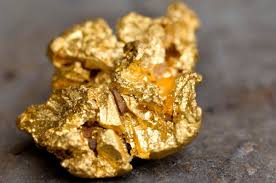In a breakthrough that blends microbiology with alchemy, scientists have unraveled how the soil bacterium Cupriavidus metallidurans survives toxic metal exposure and excretes microscopic gold nuggets. The discovery, published in Metallomics, sheds light on the bacterium’s unique detoxification mechanism and its role in Earth's biogeochemical gold cycle.
Key Highlights:
-
The bacterium thrives in metal-rich soils, ingesting toxic compounds of copper and gold without succumbing to their harmful effects.
-
It uses two enzymes—CupA and CopA—to manage metal toxicity. While CupA pumps out excess copper, CopA converts toxic gold and copper ions into inert forms.
-
These inert particles accumulate in the periplasm (space between cell membranes), eventually forming gold nanoparticles that are expelled from the cell.
Scientific Context:
-
The process begins when gold ions enter the bacterium and inhibit CupA, risking cellular damage.
-
CopA steps in to neutralize the ions, preventing toxicity and enabling the formation of solid gold particles.
-
Over time, these particles aggregate into sand-grain-sized nuggets, effectively turning the bacterium into a microscopic gold refinery.
Potential Applications:
-
Understanding this microbial alchemy could revolutionize low-grade gold ore refinement, offering an eco-friendly alternative to mercury-based extraction.
-
The findings may also aid in developing biosensors and bio-mining technologies for precious metals.
Sources: ScienceAlert, Live Science, Moneycontrol, IndiaTimes, Metallomics Journal (July 2025)
